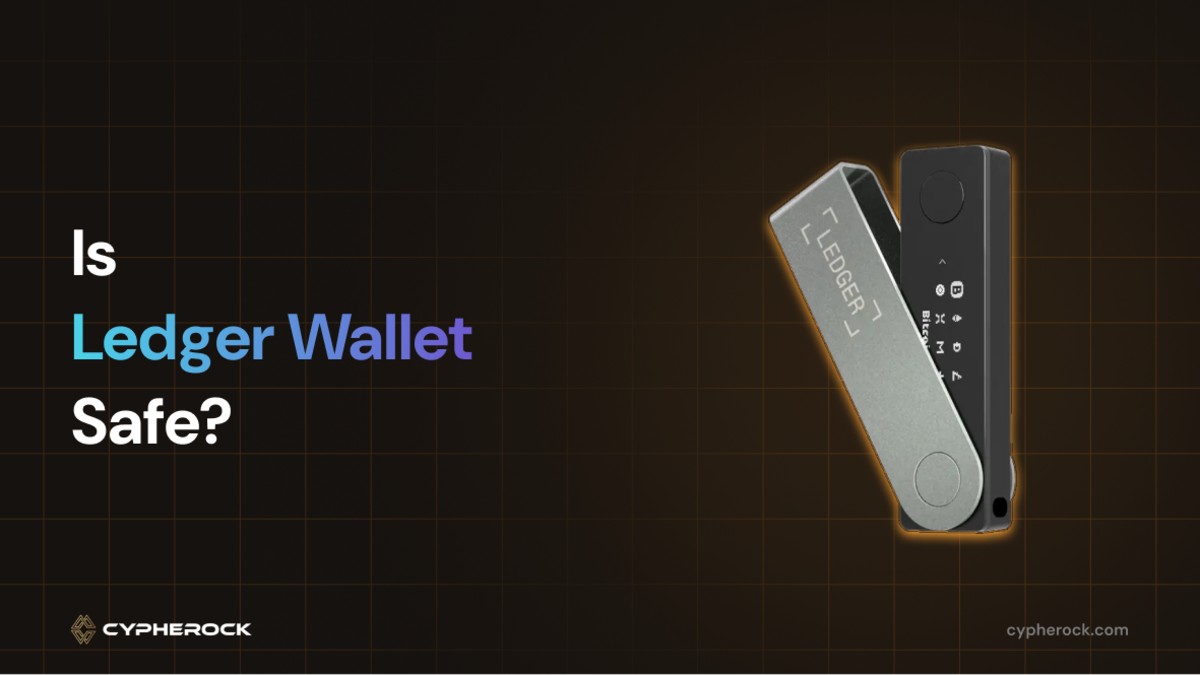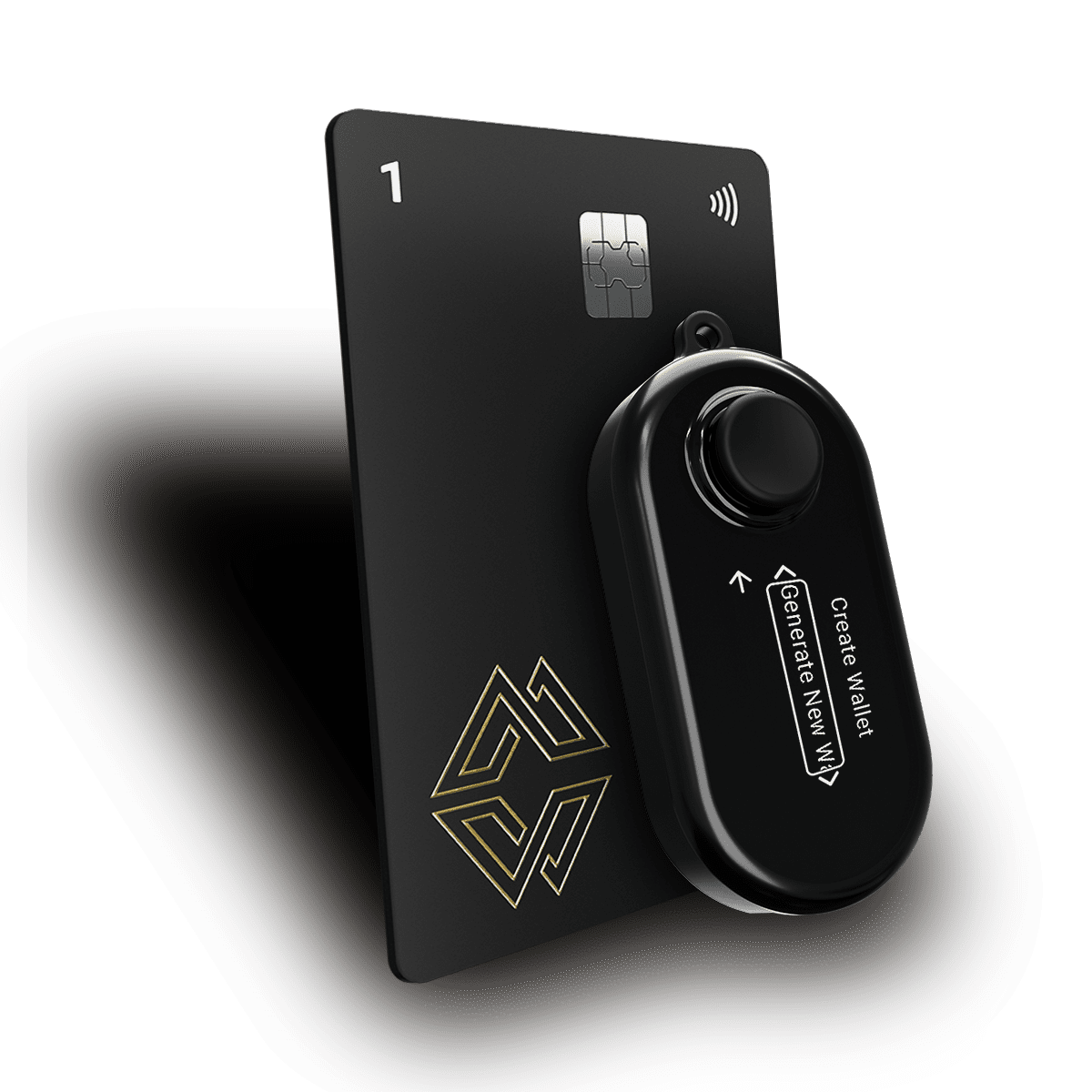

If you’re holding crypto, you probably know that safety is a big concern. News stories about hacks, scams, and lost coins can make you nervous. That’s why many people are switching to hardware wallets, which are special devices that keep your crypto offline and away from hackers.
Ledger is one of the most popular brands in this space. Lots of people trust Ledger with their digital assets. But some users and experts still worry about certain risks with Ledger devices. So, is Ledger really safe? And are there better ways to protect your coins?
In this article, you’ll get a clear look at how Ledger works, where it shines, and where it might fall short. You’ll also discover Cypherock X1, a new kind of wallet that’s designed to solve some of the biggest problems with traditional hardware wallets. By the end, you’ll know if Ledger is right for you, or if it’s time to consider something even safer.
Ledger started in 2014, right in the middle of the crypto boom. The company is based in France and quickly became known as a leader in hardware wallets. Their main products are the Ledger Nano S and Ledger Nano X. Both of these devices look like small USB sticks with tiny screens.
Ledger wallets are famous for two things: they support a huge number of coins (over 5,500) and they are very easy to use. You can store popular coins like Bitcoin, Ethereum, Solana, and even NFTs. You can also manage your coins on your computer or phone, using Ledger’s companion app called Ledger Live.
Because of their wide coin support and simple design, Ledger wallets have become the top choice for both beginners and experienced crypto users. The Nano S is affordable and easy to use. The Nano X has extra features like Bluetooth, a bigger screen, and support for more apps at once.
If you want a hardware wallet that “just works” with most coins, Ledger is often the first device people recommend.
When you buy a Ledger wallet, the first thing you do is set it up. You connect it to your computer or phone and create a PIN. This is a secret code you’ll use every time you turn on the device. Then, the device gives you a recovery phrase, a list of 24 words.
This phrase is the key to your crypto. You must write it down and keep it safe. If you lose your wallet, you can use the recovery phrase to get your coins back. But if someone else gets your phrase, they can steal everything.
Ledger wallets store your private keys completely offline. When you want to send crypto or use a dApp, you connect the device, confirm the details on the tiny screen, and approve the action with the buttons. This means hackers can’t steal your coins by infecting your computer, because your keys never leave the device.
You use Ledger Live to buy, send, swap, or stake coins. It’s an app that runs on your computer or phone. Nano X has Bluetooth, so you can manage your coins wirelessly on mobile. Nano S connects with a cable.
Ledger devices are built for security. Each device has two main chips inside. One chip is like a regular computer chip, and the other is a special “secure element” chip (EAL6+ on the Nano S Plus and EAL5+ on the Nano X). This special chip is where your private keys are locked away. No app, virus, or website can touch them.
Every Ledger device has a screen. When you send crypto, the wallet shows the details on the screen, and you must press the buttons to approve. This step stops malware from stealing your money behind your back.
Ledger lets you set a PIN code for every use. You can also add a passphrase, an extra word or sentence that acts as a “second lock.” Ledger supports two-factor authentication (2FA) and multisignature setups if you want even more protection.
One big reason people pick Ledger is the number of coins it supports. You can store more than 5,500 different coins and tokens on a single device. This makes Ledger great for anyone who wants to manage a diverse crypto portfolio.
Ledger’s software, Ledger Live, is also a big plus. You can buy, swap, stake, and even lend coins, all in one place. The app works on Windows, Mac, Linux, and mobile phones. With the Nano X, you get Bluetooth for easy use on the go.
Ledger wallets are also handy for people who use DeFi apps, NFTs, or staking. Ledger Live connects with many dApps and third-party wallets. The support team is fast and helpful. If you have questions, you can chat, email, or use the huge learning library called Ledger Academy.
No wallet is perfect, and Ledger has its weak spots. The biggest issue for many users is that the device’s main software (firmware) is closed source. This means you and other experts can’t see exactly what’s happening in the code. You have to trust Ledger’s team and security audits.
A big controversy started in 2023 with Ledger’s “Recover” feature. This would let users recover their wallet even if they lost their recovery phrase. But it also meant the device could, in theory, send parts of your seed phrase to outside servers. Some users worried this could be abused or become a “backdoor” if hackers or bad actors got access.
Ledger faced a significant breach in 2023, where customer data was compromised due to a hack that exposed personal details linked to customers' crypto wallets. While the hack did not affect the wallet’s security directly, it raised concerns about data leaks, highlighting the importance of security measures beyond just the device itself. Learn more...
If you lose both your Ledger device and your backup recovery phrase, your funds are gone forever. The device itself is a “single point of failure.” Also, the Nano S can only handle three apps at once, which can be limiting. You have to manage your own backups, if you’re careless, you could lose everything.
Ledger is strong, but some users want a wallet with even fewer risks. That’s where Cypherock X1 comes in. It’s a hardware wallet designed to fix the main weaknesses of traditional devices like Ledger.
Cypherock X1 uses a multi-component design. Your private key is split into five different parts. No single device or backup ever holds the entire key. To unlock your wallet, you need any two out of these five parts. This means even if you lose three pieces, your crypto is still safe. There’s no single point of failure.
Cypherock X1 has open-source firmware and code. Anyone can check for hidden bugs or backdoors. The code is also checked by third-party auditors. You can view your seed phrase securely any time, and the device supports inheritance planning. You can store up to four different wallets on one X1 device and manage your portfolio all in one place.
Compare Cypherock X1 with other top wallets: Cypherock vs Ledger, Trezor, and KeepKey
| Feature | Ledger | Cypherock X1 |
| Security Architecture | Single-device key storage | Multi-shard, decentralized storage |
| Recovery Process | 24-word seed phrase | No single seed phrase, 5 parts, need any 2 to recover |
| Transparency | Closed-source firmware | Fully open source |
| Firmware Update Risks | Updates may change device behavior | Open code, easier to verify |
| Inheritance & Portfolio | No native inheritance; single wallet | Built-in inheritance, multi-wallet |
| Device Failure Risk | Lose device + backup = lost funds | Can lose up to 3 parts, still safe |
| Mobile Compatibility | iOS/Android via Ledger Live (Nano X Bluetooth) | Also support iOS/Android via Cypherock CySync |
| Customer Support | Fast, large support library | Direct help, open community |
Cypherock X1’s unique split-key and backup system offers a level of recovery and protection that single-device wallets can’t match.
Ledger is a smart pick if you want something simple, reliable, and able to hold almost any crypto asset. It’s best for beginners, people who want a user-friendly app, and those who do a lot with DeFi, NFTs, and staking.
But if you’re someone who worries about losing your backup, wants open-source code, or likes the idea of truly decentralized security, Cypherock X1 might be better for you. It takes away the risk of losing everything if one piece goes missing, and gives you more ways to protect your wallet, like crypto inheritance or managing several wallets in one place.
Whichever you choose, remember: both are much safer than leaving coins on an exchange or in a hot wallet connected to the internet.
If you have your recovery phrase, you can restore your wallet on a new device. Lose both, and your coins are lost.
No, your private keys stay offline. But some worry the “Ledger Recover” feature could allow outside access. Closed code means you can’t fully check.
Cypherock’s split-key system means you can lose up to three parts and still recover your wallet. There’s no single backup risk, and it’s fully open source.
Ledger does not have built-in inheritance tools, you need to share your backup and instructions. Cypherock X1 lets you plan inheritance more safely and simply.
Ledger wallets are safe for most users and are trusted by millions. They’re easy to use, support thousands of coins, and give you peace of mind, if you manage your backups carefully. But they do have risks: closed code, possible firmware backdoors, and total loss if you misplace your device and recovery phrase.
If you want next-level security, open-source code, and backup recovery that can survive fire, theft, or simple mistakes, check out Cypherock X1. It’s a new kind of wallet made for people who want to future-proof their crypto and never worry about losing it all.

Start securing your crypto journey today—visit Cypherock X1 to learn more.
Connect with us:
Twitter: @CypherockWallet
Telegram: Join the Community
